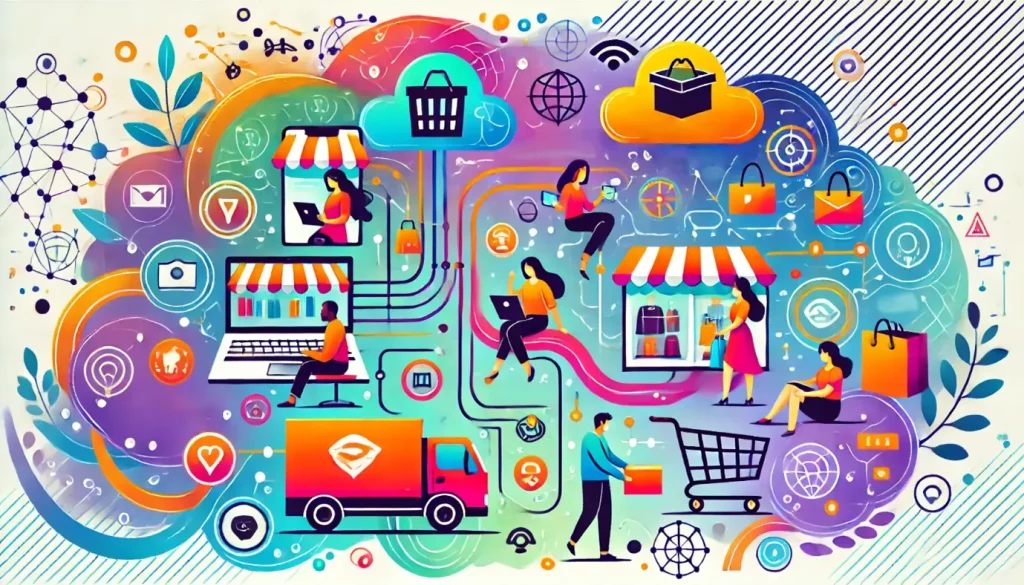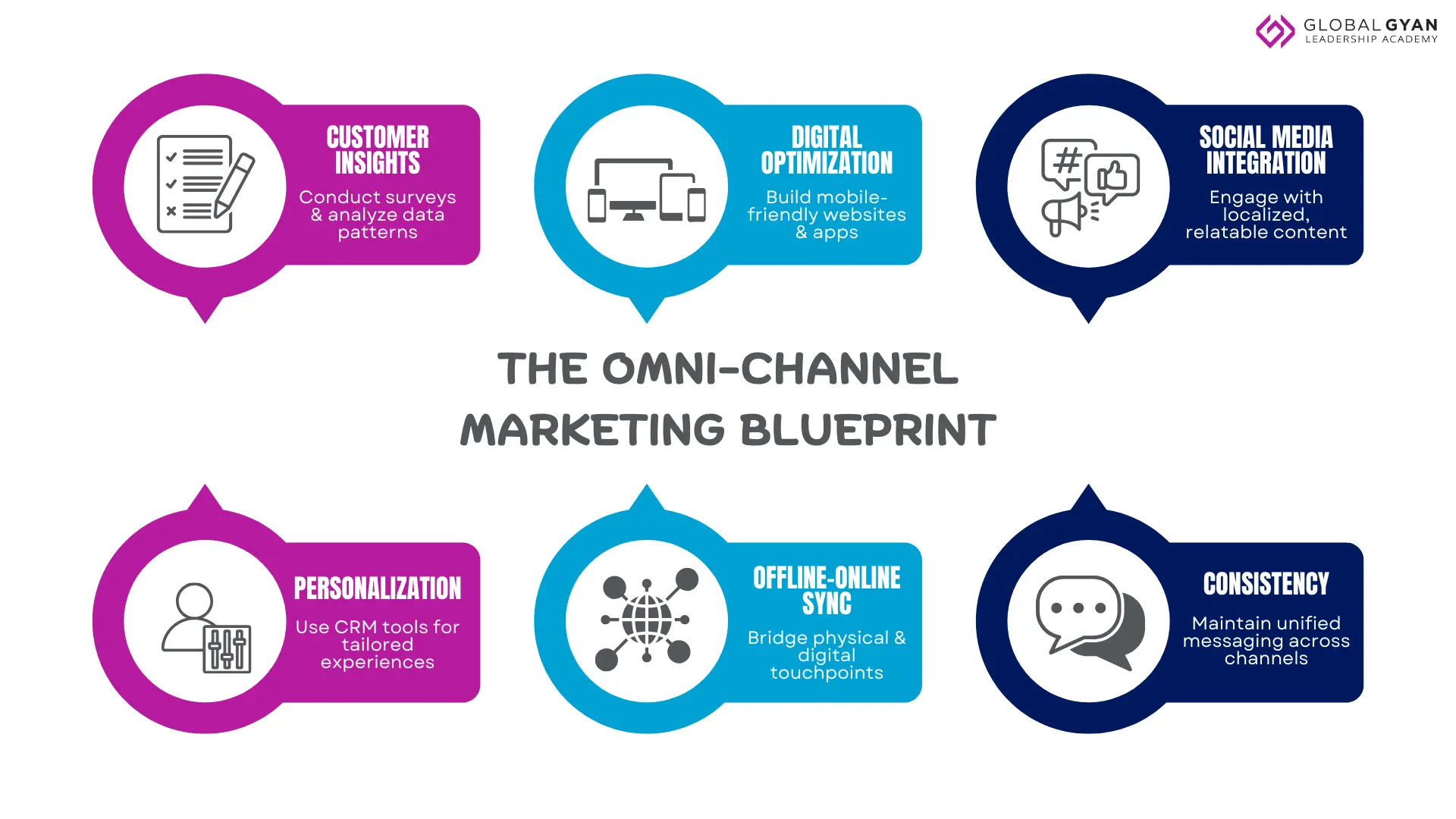The Future of Retail in India: How Omni-Channel Marketing is Changing the Game


Before we dive into that, let me tell you about a recent interaction that had me impressed. For the longest time, my cousin had her eyes on a roll away trolley from IKEA that can serve multiple needs – it could be used as a rack to display a collection of books, it could be used as a server’s rolling trolley to impress your guests or a simple trolley for storage. But, but, but – there were 2 hiccups that stopped her from hitting the ‘buy now’ button. The hiccups being: 1. She wasn’t sure of the metal used and if it would be durable. 2. She lives on the other side of the city as IKEA, so lugging a box that weighed more than 4 kgs through the local trains of Mumbai would be a task and wasn’t up for the traffic chaos either.
To her luck, I visited the IKEA store on one of my leisure days that month. On showing the staff member the website page of the product in question, I was directed and guided to the section housing those trolleys. Durability was checked, contentment was achieved, post which I called my cousin on video, showed her the product and informed that the purchase would be worth it. Before I could exit the store, she had made the purchase on the website and the trolley was delivered to her in the next 3 days.
What just happened? A product was viewed on a website in the comfort of one’s home, the quality was checked in the physical store, the purchase was made over on the website and the delivery was fulfilled by the brand itself.
Sounds messy? Well, it wasn’t! In fact, it was so easy. The comfort of noticing something virtually, checking it out in the store, placing the order and getting it delivered without the hassle of managing transportation – sounds like a shopper’s dream.
There’s something comforting about being able to find the product you found online, offline too. A multitude of brands have adopted this way into their workings. This comfort is brought to you by a concept called ‘Omnichannel marketing’.
What is Omni-Channel Marketing?
Omni-channel marketing ensures that customers experience a combined and uniform interaction with your brand across all platforms—physical stores, websites, social media, mobile apps, and even customer service. Unlike multi-channel marketing, where different channels operate independently, omni-channel combines them effortlessly.
According to eMarketer, nearly 75% of online shoppers use multiple channels before making a purchase. They want to browse online, try in-store, buy on their phone, and return items online if needed.
In an era where customers demand convenience and personalization, this approach can transform your business from ordinary to extraordinary.
Why Omni-Channel is a Game-Changer
In India, the situation is unique: we have an explosion of mobile internet users, a mix of rural and urban markets, and culturally driven buying habits. A successful omni-channel strategy must address these factors head-on.
For instance, Reliance Retail’s integration of JioMart, physical stores, and WhatsApp ordering showcases how businesses can create an inclusive ecosystem. This approach not only serves tech-savvy urban consumers but also empowers small-town customers who prefer a hybrid shopping experience.
Have you ever wondered if omni-channel marketing is truly worth the effort? With all the buzz surrounding it, many managers are left questioning whether this strategy delivers meaningful results or is simply a trend we’ll forget about in a few years. Let’s solve this mystery together.
Imagine a customer walking into your store, exploring your website, and then completing their purchase on your app—all while feeling like it’s one smooth experience. How do you organise such co-ordination? The answer lies in mastering the art of omni-channel marketing. Online research by Aberdeen Group shows that companies with strong Omnichannel strategies retain an average of 89% of their customers in comparison to 33% of companies with weak Omnichannel Customer Engagement.
In this blog, we’ll jump into practical, culturally relevant strategies to tackle the power of omni-channel marketing for Indian businesses, so you can stay ahead in the game.
Ready to make your brand unforgettable? Let’s begin!

Breaking Down the Omni-Channel Strategy for Indian Leaders
Here’s how you can implement an omni-channel marketing strategy:
- Understand Your Audience
Before jumping into tools and tactics, take a step back to understand your customers deeply. What do they value? What are their pain points?
Actionable Tip: Use surveys and social media polls in regional languages to gather insights. For instance, a saree brand could ask, “What’s your biggest challenge when buying traditional wear online?” This helps you create a tailored experience for your audience.
- Build a Strong Digital Presence
In India, a brand’s digital presence often determines its credibility. Ensure your website is mobile-friendly, as most customers access the internet via smartphones.
Example: Nykaa, the beauty and wellness giant, blends its website, app, and physical stores seamlessly, offering personalized recommendations and discounts based on a user’s purchase history.
Actionable Tip: Optimize your website for speed and serviceability and ensure your app’s interface is sensitive. Include regional language options to cater to diverse audiences.
- Integrate Social Media and Messaging Apps
Social media is where conversations happen, and messaging apps like WhatsApp are essential for personal touchpoints in India.
Example: Brands like BigBasket use WhatsApp for order confirmations and delivery updates, creating a hassle-free experience.
Actionable Tip: Share engaging, localized content on platforms like Instagram and YouTube. Use WhatsApp Business to offer customer support and collect feedback.
- Personalize Customer Experiences
Indian customers appreciate personalization, whether it’s a custom offer or a simple acknowledgment of their preferences.
Example: Amazon India uses data-driven insights to recommend products based on browsing and purchase history.
Actionable Tip: Invest in a CRM (Customer Relationship Management) system to track customer interactions and tailor your marketing accordingly.
- Leverage Offline and Online Channels Together
Physical stores still play a crucial role in India, but integrating them with digital channels is where the magic happens.
Example: Tanishq’s hybrid approach allows customers to book jewellery trials online and experience them in-store. This ensures convenience while retaining the ‘touch-and-feel’ factor crucial in Indian culture.
Actionable Tip: Use QR codes in your store to guide customers to your website or app for exclusive deals.
- Consistency Across Channels
Indian customers expect reliability. Whether they interact with your brand on Instagram, your app, or your physical store, the messaging and quality should remain consistent.
Example: Zomato’s tone of communication—witty, relatable, and engaging—is consistent across social media, email, and in-app notifications.
Actionable Tip: Define your brand’s voice and ensure every team member understands and reflects it across platforms.
Leadership Actions for Omni-Channel Excellence
- Empower Your Team: Train employees to understand and implement omni-channel strategies effectively.
- Invest in Technology: Use tools like AI-driven analytics to predict customer behaviour and improve integration.
- Measure and Adapt: Regularly review your strategy’s performance and be agile in making improvements.
The Way Forward
Omni-channel marketing is no longer a luxury; it’s a necessity for businesses aiming to thrive in a competitive market. For Indian leaders, the key lies in understanding the nuances of our diverse market and using them to create harmonious customer experiences.
As you embark on this journey, remember: the goal isn’t to overwhelm your audience with options but to make their journey with your brand effortless and memorable. Start small, stay consistent, and let your leadership guide your team toward omni-channel success.
“Winning in an omnichannel world demands excelling in all channels, from in-person to hybrid, inside sales, digital self-serve, and marketplaces—especially during uncertain economic times in which a poor customer experience may lead to a lost sale.”
– McKinsey
What’s your next step in creating a seamless experience for your customers? Share your thoughts in the comments below—we’d love to hear your story!






Responses